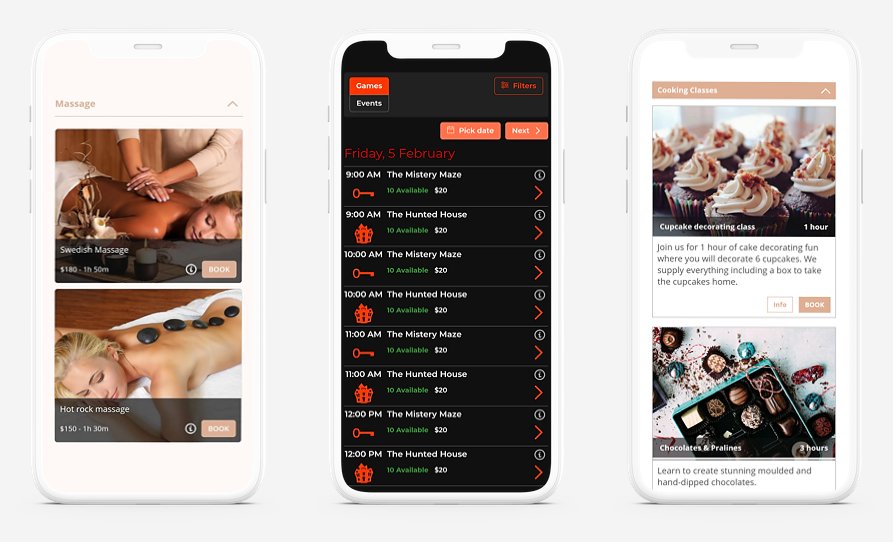
Step-by-Step Roadmap to Launching Your Ohio Business
The heat of the Midwest – Ohio, is a bustling state perfect for starting your entrepreneurial journey.
After all, the Buckeye State of Ohio boasts a diverse landscape with both charming small towns and busy urban centers. This means that there are a lot of industries where entrepreneurs can find their niches: manufacturing, healthcare, agriculture, and technology, just to name a few.
Not to mention, there are also various supportive resources available for entrepreneurs, from tax breaks to funding opportunities to the Ohio Small Business Development Center network offering support and guidance to thriving entrepreneurs.
The unique proximity to world-class universities and research institutions also means Ohio is ripe with access to a skilled workforce and specialized knowledge.

Captivated by the possibilities Ohio holds and already thinking about starting your next business in this bustling state? This guide will provide you with a compass and roadmap for starting and managing your business in Ohio. We’ll walk you through each step:
- Crafting your vision and business idea
- Choosing the right business structure
- Registering your business
- Exploring funding options and securing funding
- Develop a market strategy
- Creating an online presence
- Setting up operations
- Managing your team
Remember, careful planning and informed decision-making are the foundation of success, so let’s embark on this journey together.
1. Laying the Foundation for Success
Step 1: Craft Your Vision
Every success starts with careful planning and a well-crafted blueprint. Similarly, your Ohio business journey should start by crafting a clear vision: what you are trying to achieve with the business, how you’ll get there, and the impact you desire to make.
Your vision will act as an important foundation that sets the course for every business decision you’ll make – starting from choosing your industry to planning how you are going to secure funding and attract customers.

Here are the key steps to crafting a solid vision for your business:
- Explore your passion: Reflect on your passions and interests. What gets you excited? What activities make you lose track of time? You’ll meet challenges as you run your business, and having a business that aligns with what you love will help you face these hurdles.
- Skill assessment: Doing something you’re passionate about won’t be enough if you’re not good at it. Identify your skills and strengths, as building a business around your expertise will increase the likelihood of success.
- Market needs analysis: Research the local Ohio market to identify whether your skills and interests align with unmet needs. What problems can your skills/expertise solve? If your venture addresses a genuine need, you’ll have a higher chance to attract customers.
Conducting Market Research and Competitive Analysis
Once you’ve identified a market/niche, dive deeper into this chosen market by conducting market research and competitive analysis.
- Market research: Identify the market landscape. Try to understand trends, demands, and potential gaps/opportunities. Utilize resources like the Ohio Business Gateway and the U.S. Small Business Administration websites to gather valuable insights.
- Talk to the locals: Send surveys or if possible, interview industry experts, potential customers, and other business owners in Ohio. Get their feedback on your business concept, and identify opportunities to fill gaps. Remember that your business will exist within a community, and understanding the dynamics is crucial
- Competitor analysis: Try to identify who your key competitors are in the chosen market, their strengths and weaknesses, and what unique value can you offer to set your business apart.
Developing Unique Value Proposition (UVP)
Your business’s UVP is what sets you apart from the competition. What unique value do you bring to customers? Is it a better product, superior customer service, a sustainable approach, or others?

Clearly articulate the benefits of your product or service offers that your competitors don’t. This will be a very important basis of your branding and marketing initiatives.
Then, craft a mission statement that encapsulates your business’s purpose and UVP(s), and make sure it reflects your commitment to customers, employees, and the community.
Remember that crafting your vision is not just a formality but the compass that will guide every business decision you make in the future.
On the other hand, crafting your vision should be an iterative process, not a one-off thing. This is why you should stay open to refining it as you collect more market insights. Remember the key foundations: your business should fuel your passion, but at the same time, you should have the required skills and expertise and align with market needs.
Step 2: Choose Your Business Structure
The second crucial step in your entrepreneurial journey is choosing a legal structure for your business.
Choosing the right structure lays an important foundation for not only your business’s legal compliance but also for financial management and liability protection. There are various business structure options you can choose from in Ohio, but here are the four major ones:
- Sole proprietorship: The simplest structure with the easiest paperwork. As the name suggests, this structure is ideal for businesses owned by a single person (a solopreneur), in which the business is operating under the person’s own name. The sole proprietorship structure allows owners to have complete control, but the personal and business assets are legally recognized as a single entity. This means the business owner holds unlimited liability for lawsuits and debts.
- Partnership: Similar to sole proprietorships in many ways, but involving two or more individual owners (the partners) sharing ownership and management responsibilities. There are various types of partnerships, each with varying tax implications and liability, but all of them typically feature unlimited personal liability for the partners.
- Limited Liability Company (LLC): In this structure, the owner and the business are regarded as separate legal entities, but it still offers the simplicity and flexibility of sole proprietorship. LLCs can have single or multiple owners, offering a balance between simplicity and liability protection, shielding the owners’ personal assets from business liabilities.

- Corporation: A rather complex structure best suited for larger enterprises or those seeking significant investment. This structure offers the best liability protection but at the same time, comes with stricter reporting requirements and regulations. There are two subtypes of corporation:
-
- C-corporation: Owners have limited personal liability, but they are taxed twice (double taxation) on profits.
- S-corporation: Pass-through taxation (profits/losses pass through to owners’ tax returns) but has stricter eligibility requirements.
Considerations for Choosing Your Business Structure
Your business structure will impact your day-to-day operations and long-term financial health. Consider the following factors when making your choice:
- Number of owners: If you are flying solo, then sole proprietorship is your option. However, if you are joining forces, you’ll need to consider the partnership status.
- Liability protection: How important is shielding your personal assets in the event of debts and lawsuits?
- Tax implications: Sole proprietors report business income on personal tax returns, like LLCs and S-corporations, which offer pass-through taxation (avoiding double taxation). The C-corporation faces double taxation, but shareholders may benefit from tax deductions. If necessary, consult a tax professional for personalized advice.
- Growth plans: Some structures are more scalable and/or may have an easier time securing external funding than others.
Understanding the nuances of each business structure option will help you make the best possible choice that is aligned with your business goals. If needed, consider consulting with legal and financial professionals to help you make an informed decision.
Step 3: Register Your Business
You’ve crafted a compelling business concept and chosen the ideal structure. Now, it’s time to make it official.

In this step, we’ll navigate what you need to register your business while staying in compliance with state regulations.
- Head to the official website: First things first, go to the official website of the Ohio Secretary of State here. This is your one-stop shop to register your business in Ohio, and it’s intuitive with clear instructions, so you shouldn’t face any significant issue.
- Filing the paperwork: Depending on your chosen structure, you’ll select the appropriate form (e.g., LLC Formation, Corporation Incorporation). Carefully review the instructions and provide accurate information.
- Paying the fees: Fees vary depending on your structure and chosen filing method (online, mail, or in-person). Be prepared to pay the requisite fee to complete the registration process.
Obtaining Necessary Licenses and Permits
Next, you’ll need to obtain the necessary licenses and permits so you can legally operate your business in Ohio.
Fortunately, the Ohio Business Gateway website streamlines the process of obtaining necessary licenses and permits. Enter your business type, location, and other details to receive a personalized list of requirements. Permit regulations can change, so bookmark the Ohio Business Gateway for updates and easy access to renewal processes.
Depending on your specific industry and location, you may need both state and local permits. So, research your city or county government websites to see whether there are additional license requirements.
Remember that when it comes to registering your business and obtaining the necessary licenses/permits, attention to detail and accuracy are crucial. Don’t hesitate to seek professional help from accountants or lawyers if needed, so you can conquer this daunting but necessary step with confidence.
Step 4: Secure Funding
To start your Ohio business, obviously you’ll need capital. A variety of funding options exist, each with its own advantages and disadvantages.

Exploring Your Options
Let’s explore the available funding options to ensure your business has the financial foundation required:
Debt financing:
Bank Loans: Unsecured/secured loans from traditional banks and credit unions:
- Pros: Typically lower interest rates than other options, established and trustworthy lenders.
- Cons: Strict qualifications and lengthy approval process, required good credit score and/or collateral
Small Business Administration (SBA) Loans: Government-backed loans with more flexible terms.
-
- Pros: Lower interest rates and longer repayment terms than traditional loans. Government guarantee reduces the risk for lenders.
- Cons: Strict eligibility requirements, lengthy application process.
Lines of Credit: Flexible credit lines for ongoing expenses.
-
- Pros: Access to funds as needed, good for unpredictable cash flow.
- Cons: High-interest rates, requires good credit score.
Equity financing:
Investors: Angel investors, venture capitalists, or private equity firms invest in exchange for equity in the business.
-
- Pros: Access to large amounts of capital, mentorship, and guidance from experienced investors.
- Cons: Loss of ownership and control, high pressure to deliver returns.
Crowdfunding Platforms: Raise funds from a large number of individuals online.
-
- Pros: Can raise capital without giving up equity, good for building early brand awareness.
- Cons: Competitive, requires a compelling campaign and active engagement with backers.
Other options:
Bootstrapping: Or, self-funding, where you fund the business on your own, be it with personal savings, credit cards, or reinvested profits.
-
- Pros: No debt (except for credit card debts), complete ownership and control.
- Cons: Limited funding and slower growth potential
Grants: Competitive grants from government agencies or non-profit organizations.
-
- Pros: Free money, no need for repayment.
- Cons: Highly competitive, specific eligibility requirements and restrictions on how funds can be used.
As you can see, each funding option has its pros and cons. Evaluate your funding needs, repayment capacity, and risk tolerance when making your choice. If necessary, consult with financial advisors or business mentors, as they may be able to provide you with valuable guidance.
Crafting a Compelling Business Plan
If you are planning to secure outside funding, you’ll need to craft a business plan, which essentially serves as your investment pitch.
However, even if you are planning to start by bootstrapping, a well-written business plan will still serve as your roadmap and compass in achieving success with your business.

The specific structure of your business plan can vary depending on your business needs or the industry it’s in, but here are some common elements included:
- Executive Summary: This section summarizes the key points of the business plan, including your mission statement, products/services offered, target audience, unique value proposition, financial projections, and funding request. The executive summary is often the first thing the readers (investors and potential lenders) will read, so this section should be engaging and concise.
- Company Overview: A detailed overview of your business, including what it’s about, its (brief) history, legal structure, management team, and competitive landscape of the industry. This section should communicate what makes this business unique and why it will be successful.
- Products and Services: This section describes the products or services your business offers in detail, including their features, key benefits, and pricing strategies. You can highlight any intellectual property you own and/or are developing.
- Market Analysis: A detailed outline of your market analysis results, this section should demonstrate your deep understanding of your target market including its size, demographics, needs, pain points, and growth potential. Should also showcase your key competitors, industry trends, and explain how your business will differentiate itself.
- Marketing and Sales Strategy: Explain how you plan to reach your target market, attract customers, and generate sales. Include your pricing strategy, planned sales process, and marketing channels.
- Operational Plan: Outline your business operation, including key management team, production plan, distribution, and day-to-day activities. Highlight your management team’s experience, skills, and qualifications and demonstrate the team’s ability to execute your plan.
- Financial Projections: Financial forecasts for your business, including revenue, expenses, cash flow, and profits. Present realistic and detailed assumptions, and base your projections on industry data and actual market research.
- Funding Request: An optional section if you are seeking outside funding. This section should also clearly articulate the amount you need and how the funding will be used to drive business growth. Explain the ROI (return on investment) for potential investors.
- Appendix: Include any supporting documents, such as your financial statements, market research data, and team resumes.
Keep your business plan concise and well-structured – typically, 15-25 pages is enough for most businesses, and tailor it to your specific audience and objectives. Use clear language and try to avoid technical jargon unless it’s absolutely needed, and proofread carefully before submitting the business plan to avoid any typos and grammatical errors.
2. Building Your Business Framework
Congratulations! You’ve gone past the preparation stage for your business, and in this second section, we will explore how to turn your vision into a functional business with a clear strategy.
Step 5: Develop a Marketing Strategy
To attract customers and generate revenue, your business needs a targeted marketing strategy. Your marketing strategy should focus on identifying and understanding your target audience, crafting a memorable brand identity, and turning prospects into loyal customers and advocates.

- Knowing your target audience: Identify your ideal customers based on their age, interests, needs, pain points, online behaviors, and other details. Research local demographics and competitor strategies to refine your target audience profile.
- Craft clear brand messaging: Develop a compelling brand story that resonates with the target audience you’ve identified. Make sure to clearly articulate your unique value proposition (UVP) and communicate why customers should choose your business over your competitors.
- Brand positioning: Define how you will differentiate your brand from competitors. What sets you apart in terms of quality, innovation, or service? Articulate your brand values, mission, and voice. What makes you stand out in the Ohio market?
Utilizing various marketing channels
There is a wide variety of marketing channels you can use to promote your business in Ohio, to name a few:
Digital channels:
-
- Website: A must-have, your website is your business’s digital storefront and will often be the first point of contact your customers have with your business. Make sure your website is mobile-friendly, intuitive, professionally-designed, and SEO-optimized for local search.
- SEO: Search Engine Optimization refers to optimizing your website and online content to rank higher in search results of relevant keywords. This will drive organic traffic from potential customers searching for what you offer.
- Social media marketing: Choose platforms where your target audience thrives (e.g., Facebook, Instagram, Twitter) and create engaging content, run targeted ads, and foster community interaction.

- Pay-Per-Click (PPC) Advertising: Utilize platforms like Google Ads or Facebook Ads to reach specific demographics and interests with targeted ads, driving traffic to your website or generating leads.
- Email Marketing: Build an email list and send targeted campaigns with valuable content, promotions, and special offers to nurture leads and convert them into customers.
- Content Marketing: Create informative and engaging blog posts, articles, videos, or infographics relevant to your niche, establishing yourself as a thought leader and attracting organic traffic.
- Local Online Directories: List your business on relevant directories like Google My Business, Yelp, and Angie’s List to increase local visibility and attract customers searching online.
Offline channels:
- Networking: Attend industry events, workshops, and conferences to connect with potential customers, partners, and influencers.
- Collaborations: Partner with other local businesses for joint promotions, events, or cross-marketing opportunities.
- Public Relations: Generate positive media coverage in local newspapers, magazines, or online publications to boost brand awareness and credibility.
- Direct Mail: For certain industries or targeted campaigns, consider sending personalized direct mailers with coupons, promotions, or informative content.
- Community Involvement: Sponsor local events, support local charities, or volunteer your time to demonstrate social responsibility and build goodwill within the community.
Some important considerations when planning your marketing strategy:
- Budget allocation: It’s critical to strategically allocate your marketing budget. The basic idea is to focus your budget on channels with the highest potential ROI for your business and the highest likelihood of attracting more customers. Experiment, refine, and adapt your strategy to reach your target audience more effectively.
- Track, analyze, and improve: Your marketing strategy shouldn’t be a one-off thing, but you should continuously update it to ensure optimal performance. Use data and analytics tools to measure the performance of each marketing channel and make adjustments based on results.

- Stay informed: Stay up-to-date with the latest market trends and shifts in customer behaviors. Adjust and adapt your strategy accordingly.
Step 6: Building Your Online Presence
In today’s digital world, establishing a strong online presence is no longer an option but a necessity.
Let’s delve into the key steps to build a strong online presence for your Ohio business:
- Building a professional website: As mentioned above, having a professional website is critical for any business. Invest in a mobile-optimized and user-friendly website that reflects your brand identity and resonates with your target audience. Fortunately, with platforms like Wix, WordPress, or Squarespace, building a professional and well-designed website hasn’t been easier and more affordable. Bookeo also offers a WordPress booking plugin, booking app for Wix and a booking widget for Squarespace, which allows you to easily embed online booking, when you build your website on any of these platforms.

- Social media: Build an organic presence on relevant social media platforms based on your target audience (i.e., where they are active in.) Regularly share updates, promotion, and user-generated content, and consider investing in paid ads on these platforms.
- Email marketing: Build an email list and send targeted email newsletters with valuable content, special offers, and promotions. Segment your list for targeted and personalized campaigns, and use these campaigns to nurture leads and convert them into loyal customers.
- Online appointment booking and scheduling: If you are building a service-based business that relies on client appointments, then make sure to add 24/7 online booking functionality on your website. With Bookeo’s integrated booking system, it’s easy to add an intuitive and reliable online booking for yoga, massage, salon, barber shop and other types of businesses where your clients can book an appointment directly on your website with a single click.

Remember that your business’s online presence should continue to improve to meet the rapidly evolving customer demands and market trends. Continuously update your website with fresh content, engage with and respond to your audience on social media, and refine your strategies for maximum impact. Bookeo can be your partner in managing your online presence effectively, so you can focus on what matters most – growing your thriving business.
Step 7: Set Up Operations
Now, it’s time to solidify your business’s operational foundation, ensuring your business runs efficiently and effectively.
This involves several key areas:
Finding Your Perfect Location
Consider the following factors when choosing your business location:
- Brick-and-mortar or virtual?: Consider your business model, offering, and target audience. Can you operate virtually to save costs, or do you need a physical storefront?
- Consider your target market: If you do need a physical location, evaluate factors like rental costs, local demographics, accessibility, and foot traffic when making your considerations.
- Local regulations and zoning: Evaluate local permit requirements and zoning laws for your business type in your chosen location.
- Competitor presence: Assess the proximity of competitors in your chosen location. Identify opportunities to differentiate your business or fill existing gaps.
Securing Necessary Equipment
Obviously, you’ll need to equip your business with the required tools of the trade:
- Identify essential supplies and equipment: Identify the equipment, inventory, and technology your business needs to function. Make a comprehensive list of these supplies and equipment. Prioritize items based on budget, immediate operational requirements, and functionality.
- Explore leasing options: To manage initial costs, consider leasing equipment (if available.) Make sure to evaluate lease terms and agreements before making decisions.
- Invest in quality: Balance cost considerations with the long-term efficiency and durability of equipment. Especially prioritize key pieces of equipment or supplies that are critical to your business process.
Establishing a Financial Management System
Managing your finances is obviously a must to ensure a secure future for your business.

- Choose a reliable accounting system: Consider popular platforms like Xero, Quickbooks, or Freshbooks to streamline your accounting management process. Make sure to choose an accounting system that aligns with your industry, business size, and complexity.
- Establish invoicing and payment process: Set up efficient invoicing systems for accepting timely and secure payments. Explore digital payment options to enhance convenience.
- Cash flow monitoring system: Implement cash flow projections to anticipate and address financial needs. Regularly track income, expenses, and profit margins.
Setting up reliable and secure operations is about transforming your vision into a tangible reality. So, as you navigate these operational decisions, pay extra mind that each choice will contribute to the overall success, efficiency, and productivity of your Ohio business.
Step 8: Build and Manage Your Team
Even if you start your business as a solopreneur, eventually, you might reach a point where you need to expand your team.
Hiring the right people can propel your growth, but managing them effectively requires meticulous planning and strategic leadership.

Consider these insights to help you build and manage your team:
- Finding the perfect fit: Clearly define the roles and responsibilities needed within your business. Seek candidates with the experience, expertise, and cultural fit that align with your company values and mission.
- Hiring and onboarding: Make sure to stay compliant with Ohio labor laws and regulations for recruitment, interviewing, and hiring practices. Implement a seamless onboarding process to help new team members fit in.
- Create clear job descriptions: Clearly outline roles, job responsibilities, expectations, and qualifications. This will be an important basis for recruitment and the benchmark to measure employee performance.
- A positive and productive work environment: Cultivate a thriving workplace by ensuring:
- Clear communication: Establish clear communication channels and encourage constructive feedback. Actively listen to your team’s concerns and needs, and address them promptly.
- Feedback and recognition: Encourage regular constructive feedback and celebrate achievements to foster a positive and motivated work environment.
- Encourage teamwork: Encourage collaboration, celebrate collective successes, and build a strong team spirit.
- Growth opportunities: Offer training and development opportunities for skill enhancement. Outline potential career paths within the organization.

Even if you’re currently a solopreneur, remember that this section provides valuable insights for future planning. As your business scales, having a strong foundation in hiring and team management will be crucial for sustained success.
Launch and Beyond
Congratulations, you’ve meticulously laid the groundwork for your business’s success and prepared everything. Now, it’s time to finally launch the business.
Consider the following:
- Create a memorable grand opening event: Plan an attention-grabbing launch event to attract customers. Make sure the event aligns with your brand’s personality, and offer special promotions, discounts, giveaways, and attractive activities to engage with the community.
- Leverage social media: Generate buzz by leveraging social media platforms to tease the grand opening and promote your offers. Consider partnering with influencers or local media to amplify your reach.
- Collaborate with local businesses: Forge partnerships with local businesses and look for cross-promotion opportunities. You may be able to tap into their existing customer bases to expand your reach.
Ongoing Customer Service
To ensure lasting relationships, it’s important to ensure ongoing customer service with consistent quality of service.
You can follow these actionable tips:
- Prioritize service excellence: Provide exceptional customer service from day one. Promptly address customer inquiries, feedback and concerns. Exceed expectations by always being responsive and go the extra mile to create memorable experiences.
- Personalize customer experiences: Personalize interactions with customers to build lasting relationships. Use customer data, feedback, and insights to tailor offerings and services.
- Implement loyalty programs: Launch loyalty programs to reward loyal customers/repeat businesses. You can offer exclusive perks, early access to products/services, or discounts to these loyal customers.
- Gather and leverage feedback: Regularly collect customer feedback through surveys, direct interactions, and surveys. Use insights only to improve your customers services, but also to enhance your products and fortify overall customer experience.
Adapting and Growing Your Business
No matter how well-planned and well-executed your business is, you will need to adapt and respond to market changes sooner or later.

It’s important to:
- Stay informed: Continuously keep track of industry trends, competitor activity, and shifts in customer behaviors/needs. Be prepared to adjust your strategies and update your offerings.
- Embrace innovation: Explore new tools and technologies and continuously seek opportunities to improve your products/services and streamline processes.
- Diversify: Identify opportunities to expand or diversify your offerings by introducing new products or services based on market trends and customer needs.
- Community engagement and networking: Participate in local events, sponsorships, and community initiatives. Stay connected with the local business community to build lasting relationships and collect valuable insights.
Conclusion
Congratulations, you’ve journeyed through this step-by-step roadmap to launching and running a business in Ohio. We’ve shared the knowledge and tools you can use to make your business dream a reality, from navigating the registration process to crafting a marketing strategy to building a strong online presence:
- Plan meticulously: Research, strategize, and secure your legal and financial footing.
- Craft a compelling brand: Define your unique identity and value proposition.
- Embrace digital power: Build a user-friendly website, leverage SEO, and engage with your audience on social media.
- Prioritize exceptional customer service: Build trust and loyalty through genuine interactions.
- Adapt and evolve: Stay informed, embrace innovation, and be willing to adapt to market changes.
Explore the benefits of Bookeo’s appointment scheduling software as your partner to elevate your Ohio business journey. Visit Bookeo’s website for a free trial, and explore how Bookeo can streamline your operations, automate tasks, and empower you to manage your business efficiently.

